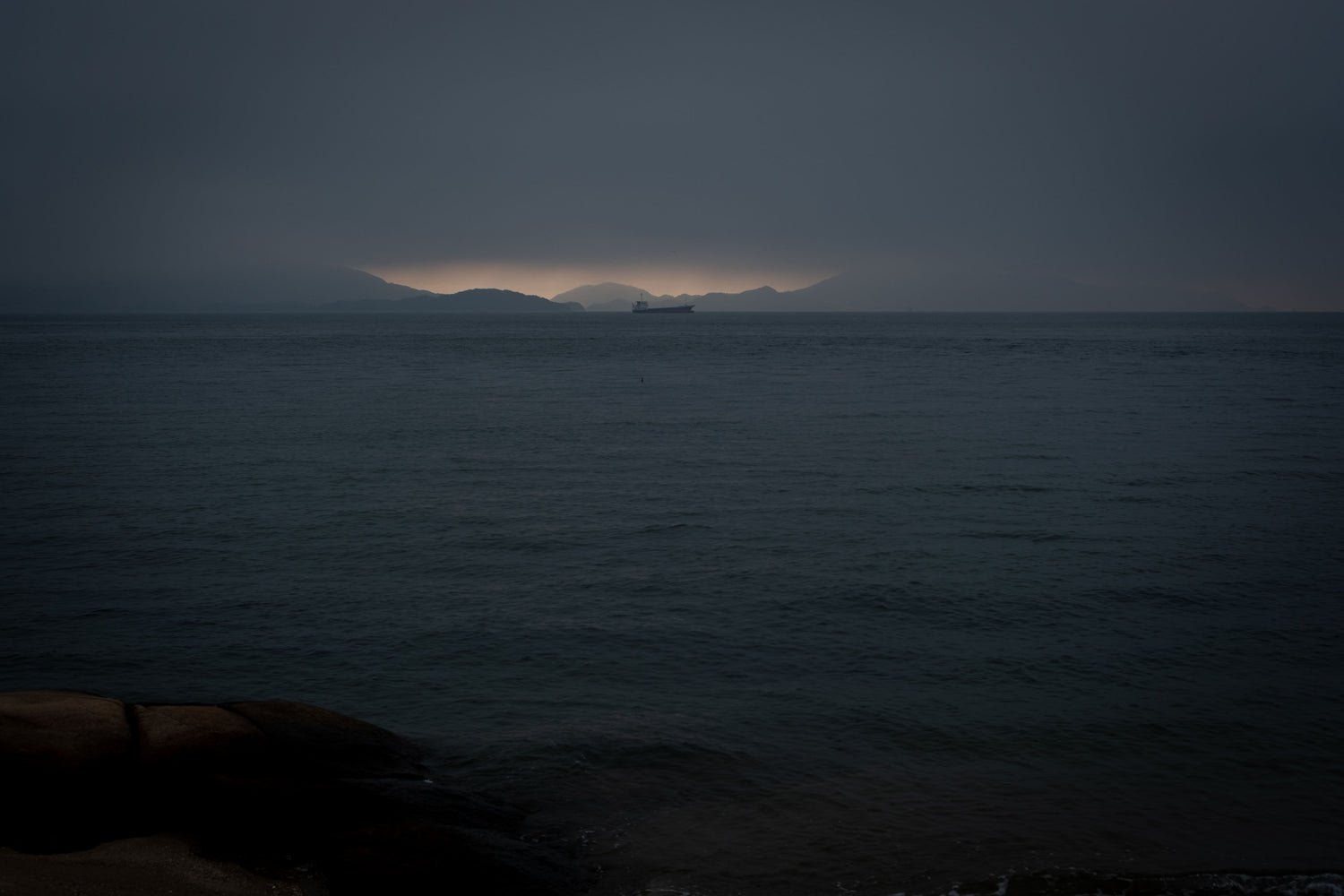The 88-Temple Shikoku Pilgrimage is well-known across Japan as well as abroad and remains one of the island’s biggest draws. And while this pilgrimage is “the” pilgrimage trail for many, there are a myriad of other associated pilgrimages which thread across Shikoku and continue the work of weaving the people, temples, and scenery of each of the four prefectures of this place we call Shikoku into a rich mandala of culture and tradition.
Yet, these paths largely tied to legends surrounding the wondering monk Kūkai and his esoteric teachings are not the only holy trails to be found on Shikoku. And throughout the ages there have been other routes which bring pilgrims before deities hailing from the murky annals of Japan’s mythic past yet remain dimly visible through the mists of history and legend. And as one of the earliest islands of the Japanese Archipelago to be created according to Japan’s early mythic records this is all the more fitting.
A God of Many Names
The Konpira Shrine of Kagawa Prefecture is one of these sites and serves as the principle shrines of all other Konpira Shrines scattered across Japan. The tale of this shrine is a rich and storied one that somehow manages to capture many of the themes related to the history of Japanese Religion and demonstrates the rich, multi-layered, and sometimes confusing but always fascinating web of faith that so often sums up religion in Japan.
According to legend the shrine has its origins in mythic times when the deity Konpira flew to Japan from India and decided to settle on Mount Zōzusan in what would eventually become Kagawa Prefecture. Literally meaning “Elephant’s Head Mountain” due to its shape, the deity was searching for a powerful location to reside and considering the connections between good fortune and the elephant often found in Asian Religions it seems that the choice of this mountain may have been more than coincidence.
Later on, as Buddhism began to spread across the Japanese Archipelago and mingle with localized deities, the identity of Konpira began to mix and change. At times, the deity would be known as Konpira Daigongen for followers of Shugendō who venerated powerful mountain spirits and practiced ascetic training within the hidden forests of distant and lonely mountain peaks. These practitioners were also heavily influenced by Buddhism as the term “gongen” can refer the manifestation of one or more Buddhas in the imposing form of fierce and powerful mountain deities.
The deity would also take on further Buddhist association as a manifestation of Kubera, the fierce leader of the 12 Heavenly Generals. These generals are a collection of powerful spiritual beings who were moved after hearing the preaching of Yakushi Nyorai, the Medicine Buddha, and pledged to protect and serve both the Buddha as well as his faithful. The site of the shrine would also be home to a statue of 11-Headed Kannon, a major savior deity in Buddhism, sometime during Japan’s classical age, again showing the fluid nature of this holy mountain’s religious associations and expressions.
More importantly for the future of the shrine however, was the identification of this already quite syncretic Indo-Japanese deity with the native Japanese Kami Ōmononushi-no-Kami. This deity is found in early texts detailing Japan’s mythic past and according to some legends the land surrounding Mount Zōzusan was originally an inlet connected to the sea which compelled the deity to set up a heavenly court on the mountain in order to more easily administer both land and sea.
With so many diverse connections, Konpira’s appearance can range from the snarling glare of an armored guardian deity, to a richly robed being with wildly swept hair and sword in hand, to a gentler looking white robed figure with the beard and side-buns of a nobleman from ancient Japan. However, regardless of Konpira’s appearance or the true mythical origins of the shrine, the area became a well-known holy spot in Japan and Konpira and his shrines became associated with safety on the open waters, trade, agriculture, medicine, and good business.
In the 12th Century, the mountain was even deemed to be powerful enough to be the site of a shrine dedicated to the ex-Emperor Sutoku who died while in exile in Kagawa after failing to properly handle a rebellion at court. After his death, the court experienced misfortunes such as the rise of powerful and ambitious samurai families, drought, famine, mysterious deaths at court, and other calamities which gave rise to the fear that the ex-emperor may have come back as an “onryō,” a vengeful spirit, searching for some kind of satisfaction through otherworldly revenge. To curtail the perceived curse, several shrines and mausoleums were constructed to appease (or perhaps seal away) the potentially malevolent spirit and help secure the safety and wellbeing of the court and country.
Four-Legged Pilgrims
Since at least the beginning of Japan’s medieval era, Konpira remained a popular destination for pilgrims searching for some kind of blessing. Located nearby the lapping blue waters of the Seto Inland Sea in Marugame City some 15 kilometers to the north is a bonze lantern marking the spot where pilgrims from the mainland would disembark and begin their journey south.
During much of this time in Japanese history pilgrimage was one of the few reasons that the common folk could claim in order to travel outside of their immediate villages, so the chance to make the pilgrimage to Konpira would’ve been a big event (and possibly even a once in a lifetime chance) for many. However, in the cases in which permission to set out on the pilgrimage was denied or if the pilgrimage couldn’t be completed some would pay for another person to make the pilgrimage on their behalf. However, others would instead turn to the idea of using man’s best friend to complete the pilgrimage for them.
In this instance, a dog would be equipped with a wooden tag inscribed with the owner’s name and location in addition to a pouch with enough money for an amulet from the shrine as well as for food, lodging, or other travel necessities. Thus equipped, these dogs would trot along following other pilgrims who would look after the dog and in turn use the money in the pouch for traveling. Eventually, these canines would be ferried along by different groups of pilgrims until finally reaching the shrine before making the journey in reverse. The dogs that managed to complete this journey challenging enough for humans would be known as “Konpira-Inu,” or “Konpira Dogs.” And to this day, wooden plaques and small figures of these dogs are sold at the shrine.
Changing Times, Even for Gods
Konpira would attract both human and canine worshipers of Buddhas, Kami, and anything in-between until the modernization of Japan brought an end to the days of samurai and shōguns. Afterwards, the desire for a modern style national ideology meant that “foreign” religions such as Buddhism with its Indian origins were unacceptable which resulted in a general (and sometimes violent) separation of the Buddhas and the native Shintō deities, who until this point in time actually had relatively unclear distinctions between one another.
Due to this policy, Konpira was officially named Kotohira Shrine after the area, all ties with Buddhism or Shugendō were cut, and the deity of the mountain was officially recognized as solely the native deity Ōmononushi-no-Kami. And while this policy of separation gradually faded away and Buddhist elements are found on the mountain, the shrine’s main deity officially remains as the native Kami.
Pray and Play
Konpira has certainly remained in the hearts of many and is still frequently visited today. However, it is perhaps not the 785 steps stone steps required to reach the main hall or even the shrine’s kabuki theater that is most emblematic of the shrine, but rather a song.
The tune “Konpira Fune-Fune” is a drinking song that is often performed by geisha as part of a lively drinking game. The lyrics are often found printed on traditional style fans sold at Konpira and are an appeal to the deity to protect ships traveling around the sometimes-treacherous waters surrounding the island of Shikoku. And despite the tune’s appeals for safety it is interesting that such a prayer is more often than not accompanied by copious amounts of alcohol.
But this blending of prayer and play is typical of Japanese religious tradition. While Shintō and Buddhist ceremonies can certainly be reserved and powerful experiences, these events often spill-over into festivals as seen in Kyōto’s energetic Gion Matsuri or any number of local festival where vending stalls offer beer, sweets, grilled squids, and carnival games meant to take the hard earned money of parents in exchange for the small toys and trinkets that seem to be universally sought after by children. And Konpira is no different in many respects.
Lining the path at the base of the mountain which eventually leads to the main shrine are numerous shops, cafés, vendors, a hot-spring style inn, exhibits, and even a sake museum for visitors and pilgrims alike to enjoy during their visit to the holy mountain. The playful atmosphere of the bustling crowds enjoying themselves in the shadow of the shrine hidden somewhere amid the greenery of the mountain is interesting to view and even more so to be a part of.
Yet the gradual climb up each of the 785 stone steps reveals more and more of the austerity and quiet of the mountain and holy grounds before finally reaching the main shrine where a deity of many names remains silently listening to countless prayers while keeping a constant protective gaze over the lands and waters of this place we call Shikoku.
Written by H.Sapochak
Photos by Pierre Verney

Copper, Art, and Stone: Inujima
These islands include the famous ones known by many such as Naoshima with its iconic red and yellow pumpkins or Teshima and its stunning art museum. And it is true that these islands allow visitors entry to an entirely different universe where the lines between nature, art, and culture begin to blur and the mundanity of everyday life seems to vanish like mist in the sun. But this sensation becomes all the more tangible when discovering the smaller locales hiding in-between the popularity of more widely-known sanctuaries of artistic endeavor. And one example is the small yet entrancing island of Inujima.
In partnership with Discover Shikoku!
-
 Disover Shikoku
Disover ShikokuWelcome to Japan's most creative and bespoke travel experience, Discover Shikoku! We are a regional destination management company covering the mystical island of Shikoku, the Seto Inland Sea, and the coastal regions which surround it. If you're in search of a one-of-a-kind handcrafted travel experience fully tailored to your expectations then welcome home... We've got just what you're looking for.























